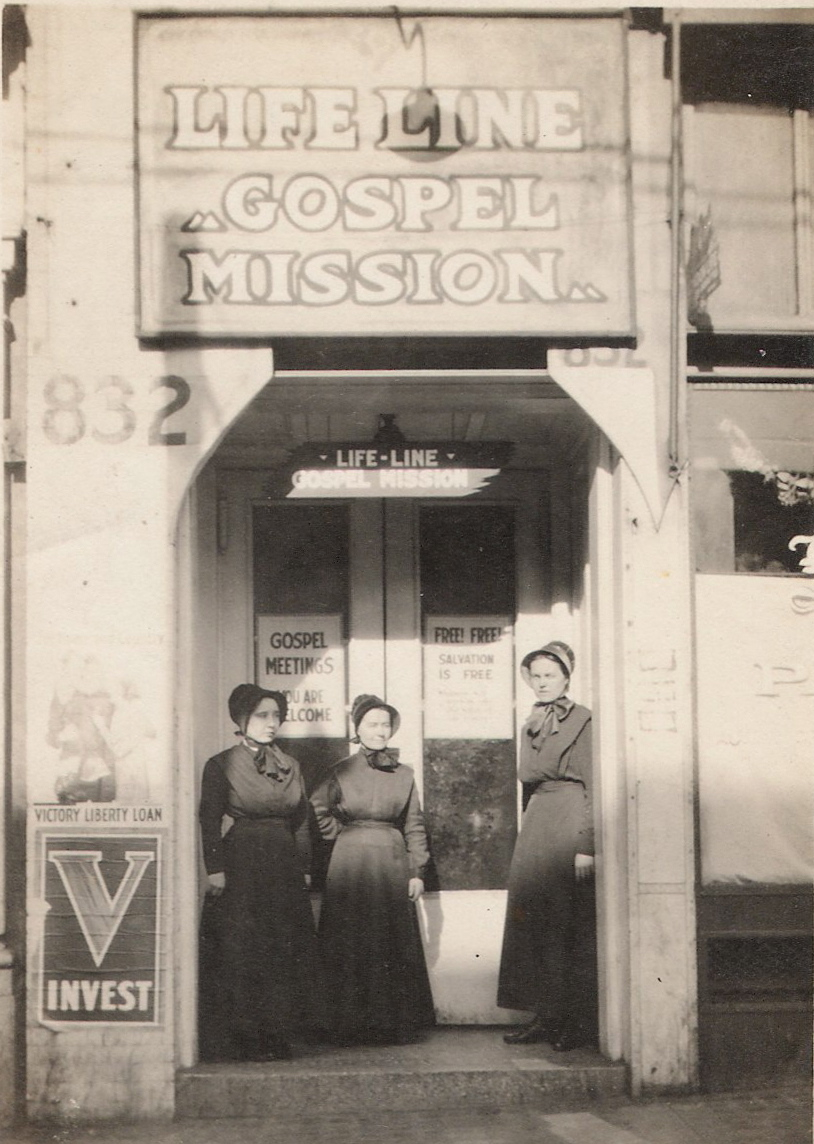
Today’s Photo Friday installment highlights two important (and sometimes contradictory) themes in Brethren in Christ life and thought during early decades of the twentieth cenutry: nonconformity and evangelism. To get a glimpse at how those two themes converged, we visit the Life Line Gospel Mission, the church’s urban evangelistic ministry in San Francisco, Calif.
At the turn of the century, life was hard for “plain people” living in the big city. Their peculiar fashion, evangelistic spirit, and apparent social isolation likely raised a few eyebrows from uninitiated passers-by.
Given these realities, some members of the Brethren in Christ Church questioned the efficacy of visible nonconformity in the midst of urban mission work. One Brethren in Christ individual, writing in the Evangelical Visitor in 1905, described the quandary well:
We have maintained for at least 100 years that our position on this question [of plain dress and the prayer covering] was Scriptural. But a new influx of our converts in our city Missions, emanating from environments new to our peculiar views, have challenged our position on these things, and challenged us in a way that is going to test our loyalty to former convictions. How are we to meet the new conditions? [1]
The writer concluded — as did the church — that abandoning the plain dress injunction would be “a concession to the flesh, an avoidance of the cross, an insidious plea of the enemy to turn us from a Scriptural testimony, and a desire to get persons into membership more than to a godly conformity” [2]. Thus, urban missionaries persisted, often seeing more converts to Christianity than new members of the Brethren in Christ Church.
And yet, perhaps ironically, plain clothing (or at least the religious and cultural connotations of plain clothing) often served to draw potential converts to urban mission churches. A 1945 log by Harry W. Buckwalter, then-superintendent of the Life Line Gospel Mission, describes the circumstances of one convert who knew he could find “victory” at the Mission chapel by virtue of the “plain sisters” standing outside its doors:
This evening he came to the hall early before we had unlocked the door. . . . He . . . said that he was burdened and did not know where to go. He had gone to a Catholic Church somewhere but did not get the help he needed. Then he saw the sisters on the street (they had been to the stores in the afternoon) and followed them into the hall. He thought that possibly they would lead him to a place where he could get the help he needed. [3]
The question of visible nonconformity would continue to plague the denomination well into the twentieth century, accelerated by the group’s gradual move from rural to suburban areas and by their greater involvement with non-Brethren in Christ communities.
For more on the issue of nonconformity and dress, see Carlton Wittlinger, Quest for Piety and Obedience (Nappanee, Ind.: Evangel Press, 1978), 342-343, 347-356, 483, 485-486.
Notes:
[1] I.J. Ransom, “Our City Missions and Their Relation to Plain Dress,” Evangelical Visitor, April 15, 1905, 4.
[3] Harry W. Buckwalter, “Log of the Life Line Gospel Mission, October 1, 1943 – December 31, 1946,” quoted in Gloria J. Stonge, “News and Notes from the Brethren in Christ Historical Library and Archives,” The Newsletter of the Brethren in Christ Historical Society, Summer 2006, 3.
